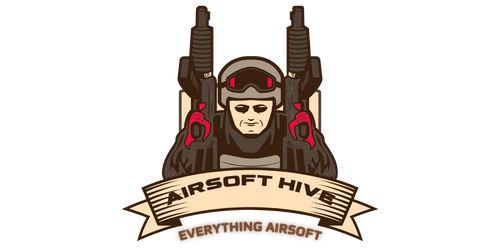Imagine you find yourself in a high-stakes situation where quick thinking, precision, and teamwork are paramount. In the intense world of airsoft, mastering the tactics for hostage rescue and extraction can mean the difference between success and failure. This article will guide you through the essential techniques and strategies that will help you become a force to be reckoned with in the thrilling realm of airsoft operations. Whether you’re a seasoned enthusiast or just starting out, prepare yourself to dive into a world of adrenaline-pumping scenarios and learn how to navigate the challenges of rescuing hostages with confidence and finesse.
Developing Situational Awareness
Situational awareness is a crucial skill for any hostage rescue and extraction operation. It involves being fully aware of your surroundings, understanding the role of situational awareness, recognizing potential threats and vulnerabilities, as well as utilizing observation and perception skills.
Understanding the role of situational awareness is the first step in developing this skill. It involves constantly monitoring your surroundings, assessing the environment, and being aware of any potential threats or dangers. By developing situational awareness, you can anticipate and respond to any unexpected situations quickly, effectively, and with minimal risk.
Recognizing potential threats and vulnerabilities is another important aspect of situational awareness. This involves identifying and evaluating any factors that could pose a risk to the success of the mission or the safety of the team. This could include things like the layout of the area, the presence of armed individuals, or any potential escape routes for the hostage takers.
Utilizing observation and perception skills is essential in maintaining situational awareness. This involves actively scanning your surroundings, paying attention to details, and being able to quickly process and analyze information. By developing these skills, you can identify any changes or anomalies in the environment that could indicate a potential threat or danger.
By developing and honing your situational awareness skills, you can greatly increase the effectiveness and safety of your hostage rescue and extraction missions. It allows you to stay one step ahead of your adversaries, anticipate their actions, and respond accordingly.
Team Coordination and Communication
Effective team coordination and communication are vital for any successful hostage rescue and extraction operation. It is essential to establish clear communication protocols, implement effective hand signals, and utilize radio communication.
Establishing clear communication protocols ensures that everyone on the team is on the same page and understands their roles and responsibilities. This includes establishing a chain of command, setting up communication channels, and defining standard phrases and signals for various situations. Clear and concise communication is crucial in high-stress situations, as it facilitates quick decision-making and effective execution of tasks.
Implementing effective hand signals is another important aspect of team coordination and communication. Hand signals provide a silent and visual means of communicating with your team members, especially in situations where verbal communication may not be possible or advisable. By practicing and utilizing standardized hand signals, team members can relay critical information without compromising their position or alerting the hostage takers.
Utilizing radio communication is also crucial for successful coordination and communication. Radios allow team members to relay information, coordinate movements, and request assistance quickly and efficiently. It is essential to establish clear radio protocols, including the use of correct frequency channels, radio etiquette, and concise and clear communication.
By prioritizing team coordination and communication, you can ensure that your hostage rescue and extraction missions are executed seamlessly and with maximum efficiency.

Planning and Preparing for Hostage Rescue Missions
Planning and preparation are key factors in the success of any hostage rescue and extraction mission. This involves collecting intelligence, analyzing the terrain and environment, as well as developing a detailed plan.
Collecting intelligence is vital to understanding the target location, the hostage takers, and any potential threats or vulnerabilities. This includes gathering information on the layout of the area, the number and armament of the hostage takers, as well as any potential hostages or civilians who may be present. By gathering as much intelligence as possible, you can develop a comprehensive plan that takes into account all the variables and ensures a successful outcome.
Analyzing the terrain and environment is also crucial for effective planning and preparation. This involves assessing the physical layout of the area, identifying potential entry and exit points, as well as any obstacles or hazards that may affect the mission. By understanding the terrain and environment, you can develop strategies and tactics that utilize the surroundings to your advantage and minimize risk.
Developing a detailed plan is the final step in planning and preparing for hostage rescue missions. This involves creating a step-by-step plan that outlines the objectives, the roles and responsibilities of each team member, as well as the tactics and strategies that will be employed. The plan should also include contingency plans and alternative courses of action to account for any unforeseen circumstances or challenges that may arise during the operation.
By dedicating time and effort to planning and preparing for hostage rescue missions, you can ensure that your team is well-equipped, well-informed, and ready to execute the mission with precision and success.
Executing Dynamic Entry Tactics
Dynamic entry tactics are an integral part of hostage rescue and extraction operations. These tactics involve identifying entry points, utilizing breaching techniques, as well as employing flashbangs and diversionary tactics.
Identifying entry points is crucial in determining the best way to access the target location. This involves carefully assessing the layout of the area and identifying potential points of entry that provide the element of surprise and minimize exposure to potential threats. It is essential to prioritize entry points that offer the least resistance and allows for maximum control over the environment.
Utilizing breaching techniques is another critical aspect of dynamic entry tactics. This involves employing specialized tools and techniques to gain entry into locked or barricaded areas. Breaching techniques can include methods such as mechanical breaching, ballistic breaching, or explosive breaching, depending on the specific circumstances and the level of force required.
Utilizing flashbangs and diversionary tactics is essential in disorienting and distracting the hostage takers. Flashbangs, also known as stun grenades, produce a blinding flash of light and a loud noise upon detonation, temporarily incapacitating the target and providing an opportunity for the rescue team to gain control. Diversionary tactics, such as creating distractions or using smoke or tear gas, can also be employed to confuse and disorient the hostage takers, further facilitating the rescue operation.
By executing dynamic entry tactics effectively, you can gain the element of surprise, neutralize potential threats, and maximize the chances of a successful hostage rescue and extraction mission.

Hostage Handling and Containment
The safe handling and containment of hostages is of utmost importance during a rescue operation. This involves approaches that prioritize the safety and well-being of the hostages, establishing control and compliance, as well as securing and evacuating the hostages.
Approaching hostages requires a delicate and cautious approach to ensure their safety. This involves establishing clear communication, showing empathy and understanding, and building a rapport with the hostages. By gaining their trust and cooperation, you can reduce tension and facilitate a smoother and safer rescue operation.
Establishing control and compliance is essential in maintaining order and preventing any potential escalation of violence. This requires firm but professional communication, clear instructions, and the ability to assert your authority in a measured and controlled manner. By establishing control and compliance, you can mitigate the risks associated with hostage situations and maintain a safe environment for all involved.
Securing and evacuating hostages is the final step in the hostage handling and containment process. This involves safely removing the hostages from the target location and ensuring their well-being. It is essential to prioritize their safety, providing any necessary medical attention or support. By carefully planning and executing the secure evacuation of hostages, you can successfully bring them to safety and conclude the rescue operation.
By focusing on the proper handling and containment of hostages, you can ensure their safety and well-being throughout the rescue operation and minimize any potential harm or risks they may face.
Cover and Fire Strategies
Establishing proper cover positions is vital to ensure the safety and effectiveness of your team during a hostage rescue and extraction mission. This involves identifying and utilizing positions that offer maximum protection from potential threats while still allowing for clear lines of sight and effective fire support.
Implementing effective fire support is another important aspect of cover and fire strategies. This involves coordinating and directing accurate and controlled fire to neutralize any potential threats or opposition. By providing suppressive fire and strategically targeting hostiles, you can create a safe and secure environment for your team and the hostages.
Covering team movements is also crucial to maintain the safety and integrity of the rescue operation. This involves designating team members to provide cover and support while others maneuver and advance. By synchronizing movements and utilizing proper cover and concealment, you can minimize exposure to potential threats and ensure the successful execution of the mission.
By implementing effective cover and fire strategies, you can maximize the safety and security of your team and the hostages, providing them with the support and protection they need during a hostage rescue and extraction operation.

Room Clearing Techniques
Room clearing techniques are essential skills for any hostage rescue and extraction operation. This involves approaching and clearing rooms, utilizing formation and movement patterns, as well as navigating through tight spaces.
Approaching and clearing rooms is a critical aspect of room clearing techniques. This involves entering a room quickly and efficiently, while maintaining awareness of potential threats and vulnerabilities. It is essential to communicate and coordinate with your team to ensure a comprehensive and systematic clearing of each room. By maintaining control and minimizing potential risks, you can swiftly neutralize any hostiles and secure the area.
Utilizing formation and movement patterns is crucial in maintaining the safety and responsiveness of your team during room clearing operations. This involves adopting formations that provide optimal coverage and minimize exposure to potential threats. Common formation and movement patterns include the diamond formation, the stack formation, and the staggered column formation, among others.
Navigating through tight spaces can present unique challenges during room clearing operations. It is essential to maintain clear communication, coordinate movements, and exercise caution to avoid getting trapped or caught in confined areas. By utilizing specialized techniques, such as slice-the-pie or corner-clearing methods, you can effectively navigate through tight spaces and minimize potential risks.
By mastering room clearing techniques, you can approach each room with confidence, maintain the safety of your team, and ensure the successful rescue and extraction of the hostages.
Utilizing Specialized Equipment
Using specialized equipment is critical in hostage rescue and extraction missions. This involves choosing the right airsoft weapons, utilizing tactical gear and protective equipment, as well as incorporating specialized tools.
Choosing the right airsoft weapons is essential to ensure the effectiveness and accuracy of your team during the operation. This includes selecting weapons that are reliable, have the appropriate range and power, and are suitable for the specific requirements of the mission. By choosing the right airsoft weapons, you can ensure that you have the firepower necessary to neutralize potential threats and protect yourself and the hostages.
Using tactical gear and protective equipment is vital in ensuring the safety and security of your team. This includes wearing appropriate body armor, helmets, and other protective gear that can withstand potential threats or impacts. The gear should also provide sufficient mobility and flexibility to allow for a full range of motion during the operation. By wearing the right gear, you can minimize the risk of injury and improve your overall performance in a hostile environment.
Incorporating specialized tools into your equipment can greatly enhance the effectiveness and efficiency of your team. This could include tools such as breaching tools, flashbangs, rappelling equipment, or any other specialized equipment that is specific to the mission requirements. By utilizing specialized tools, you can overcome obstacles, gain a tactical advantage, and increase the success rate of your hostage rescue and extraction operations.
By utilizing the right equipment and tools, you can enhance the capabilities and performance of your team, ensuring that you are well-prepared and equipped for any hostage rescue and extraction mission.
Dealing with Hostage Takers
Understanding the psychology of hostage takers is crucial when dealing with hostage situations. This involves gaining insights into their motivations, fears, and triggers, as well as understanding the potential risks and challenges they present.
Negotiation techniques play a critical role in managing hostage situations and ensuring a peaceful resolution. This involves employing communication skills, active listening, empathy, and building trust with the hostage takers. By effectively negotiating, you can aim to de-escalate the situation, buy time, and maintain the safety of the hostages.
Effective disarming tactics may become necessary in situations where negotiation fails or a direct intervention is required. This involves employing techniques that neutralize the threat posed by the hostage takers while minimizing the risk to the hostages. It is crucial to ensure proper training and practice of disarming tactics to promote a swift and controlled response.
By understanding the psychology of hostage takers and utilizing effective negotiation and disarming tactics, you can effectively manage and resolve hostage situations, ensuring the safety and well-being of the hostages and the successful outcome of the operation.
Training and Simulation Exercises
Training and simulation exercises play a pivotal role in mastering airsoft tactics for hostage rescue and extraction. This involves developing realistic training scenarios, conducting team drills and exercises, as well as utilizing simulation technology.
Developing realistic training scenarios is essential to prepare your team for the challenges they may encounter during hostage rescue and extraction operations. This involves creating scenarios that simulate real-life situations, incorporating various variables such as the number and behavior of the hostage takers, the presence of hostages or civilians, and potential environmental factors. By exposing your team to realistic scenarios, you can enhance their decision-making abilities and situational awareness.
Conducting team drills and exercises is vital in honing the skills and teamwork required for successful hostage rescue and extraction operations. This involves practicing various tactics and techniques, working on communication and coordination, as well as fine-tuning individual and team performance. By dedicating time to regular team drills and exercises, you can improve the efficiency and effectiveness of your team in high-pressure situations.
Utilizing simulation technology can greatly enhance the training experience and prepare your team for real-life scenarios. This involves using simulated environments, virtual reality training, or airsoft training systems that recreate realistic conditions and provide a safe and controlled setting for training. By leveraging simulation technology, you can expose your team to high-stress situations while minimizing potential risks or injuries.
By prioritizing training and simulation exercises, you can ensure that your team is well-prepared, equipped with the necessary skills and knowledge, and able to perform at their best during real hostage rescue and extraction operations.
In conclusion, mastering airsoft tactics for hostage rescue and extraction is a comprehensive endeavor that encompasses developing situational awareness, maintaining effective team coordination and communication, planning and preparing for missions, executing dynamic entry tactics, handling and containing hostages, implementing cover and fire strategies, utilizing room clearing techniques, using specialized equipment, dealing with hostage takers, as well as engaging in training and simulation exercises. By dedicating time and effort to each of these areas, while maintaining a friendly and supportive tone, you can equip yourself and your team with the skills and knowledge necessary for successful hostage rescue and extraction operations.


